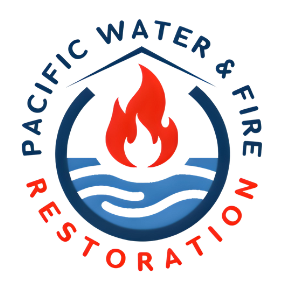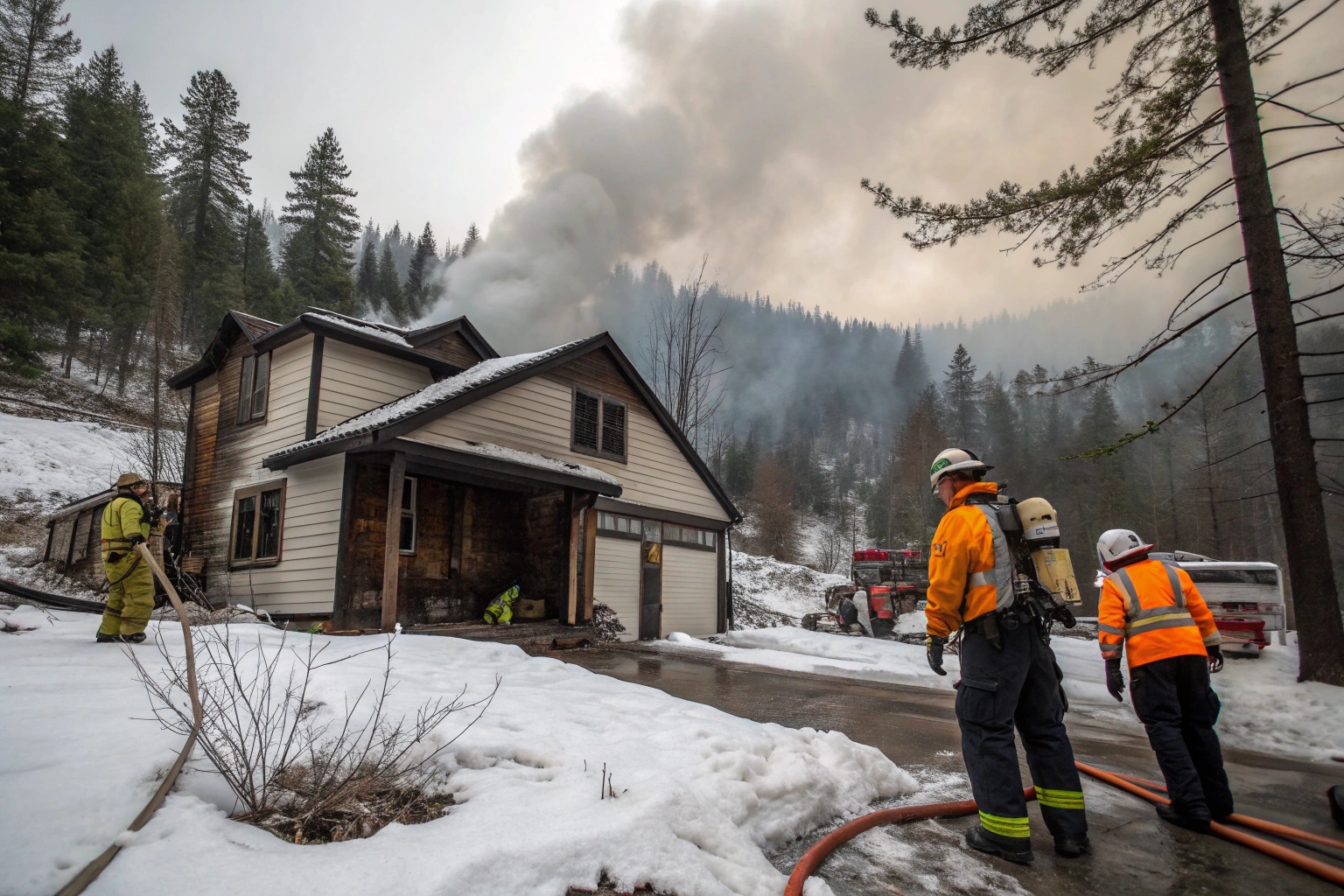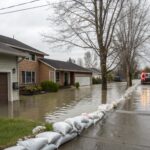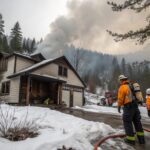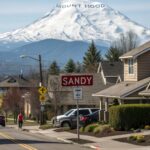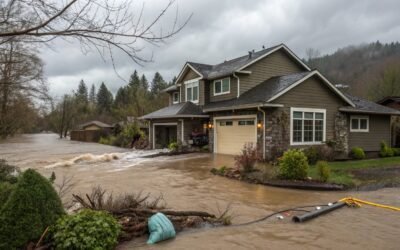Washington state presents a study in contrasts. From the temperate rainforests of the Olympic Peninsula to the arid Columbia Basin, from sea level coastal communities to mountain towns buried in winter snow, the Evergreen State contains extraordinary ecological diversity. Yet this same diversity creates a unique challenge: Washington faces potentially devastating natural disasters throughout the entire calendar year. While summer brings increasingly severe wildfire threats to eastern and central regions, winter unleashes powerful mountain snowstorms that can paralyze communities across the Cascades.
As restoration professionals serving the Pacific Northwest, we’ve witnessed how these contrasting disasters create distinct but equally challenging recovery scenarios. Whether you own property in Washington, visit regularly, or simply want to understand the region’s year-round resilience challenges, this exploration offers valuable insights into disaster preparedness, property protection, and the specialized restoration approaches needed in this diverse region.
Washington’s Dual Disaster Reality: A Year-Round Challenge
Before examining specific events, it’s important to understand Washington’s unique position facing both fire and snow disasters:
The Summer Fire Season: Growing in Intensity
Eastern Washington’s fire season has undergone a troubling transformation:
- Longer Duration: The fire season has extended by 40-60 days compared to historical averages
- Increased Frequency: The number of large fires (1,000+ acres) has doubled since the 1980s
- Greater Intensity: More extreme fire behavior with faster rates of spread
- Expanded Range: Fires now affect previously less vulnerable areas
- Interface Challenges: Growing development in fire-prone areas increases property risk
Local Impact: Communities from Omak to Cle Elum and Wenatchee to Spokane now regularly face direct wildfire threats, with recent fire seasons producing multiple simultaneous large fires across the eastern half of the state.
The Winter Snow Challenge: Mountain Communities at Risk
Meanwhile, Washington’s mountain communities face their own significant threats:
- Extreme Snowfall Events: Cascade communities can receive 4+ feet of snow in a single storm
- Structural Loading Concerns: Heavy snow can cause roof collapses and structural failures
- Freeze-Thaw Cycles: Temperature fluctuations create ice dams and water intrusion
- Access Limitations: Communities can be isolated by road closures for days
- Power Disruptions: Snow-laden trees regularly damage power infrastructure
Restoration Perspective: These winter challenges create complex restoration needs when water damage combines with power outages, freezing temperatures, and limited access for emergency services.
Climate Change Amplification
Climate research indicates both threats are being amplified:
- Warmer summers create drier fuels for more intense wildfires
- Changing winter patterns may include more extreme precipitation events
- More frequent temperature fluctuations increase freeze-thaw damage
- Greater weather variability makes preparation more complex
- Overlapping seasons create resource challenges for emergency services
Community Challenge: This evolving risk landscape requires communities to maintain year-round readiness for distinctly different threats, often with limited resources.
Historic Disasters: Learning from Washington’s Recent Experiences
Examining specific events offers valuable insights into these dual threats:
The 2020 Labor Day Fires: A Catastrophic Convergence
The 2020 fire season brought unprecedented destruction:
- Multiple Simultaneous Ignitions: Several major fires began within hours of each other
- Extreme Wind Event: Historic east winds drove explosive fire growth
- Mass Evacuations: Thousands evacuated across multiple communities
- Widespread Destruction: Hundreds of structures destroyed, including 181 homes in Malden alone
- Regional Smoke Crisis: Hazardous air quality persisted for weeks across the entire state
Local Example: The small town of Malden experienced catastrophic destruction, with approximately 80% of its structures destroyed in just a few hours as the Babb Road Fire, driven by 50 mph winds, overwhelmed the community.
Restoration Challenge: These fires created complex recovery needs, as smoke damage affected properties even hundreds of miles from active fires, requiring specialized remediation approaches.
The February 2019 “Snowmageddon”: Western Washington Paralyzed
This historic storm system demonstrated winter’s impact:
- Record-Breaking Snowfall: Seattle experienced its snowiest February on record
- Extended Duration: Snow and freezing conditions persisted for over two weeks
- Infrastructure Failure: Numerous roof collapses across the region
- Widespread Power Outages: Over 100,000 customers lost power
- Frozen Pipe Epidemic: Thousands of properties experienced pipe failures
Property Impact: When temperatures finally rose, the thawing process unleashed thousands of water damage events simultaneously, overwhelming restoration resources throughout the region.
Restoration Insight: Properties with proper insulation, heat trace systems, and emergency power capabilities experienced significantly less damage than unprepared buildings.
The 2021 Cascade Mountain Snowstorm: Communities Isolated
Higher elevation communities faced their own challenges:
- Extreme Accumulation: Some mountain areas received over 7 feet of snow
- Critical Infrastructure Impacts: Essential services disrupted for days
- Structural Failures: Multiple buildings experienced roof collapses
- Transportation Breakdown: Highways closed, isolating communities
- Extended Recovery: Some areas required weeks for full restoration
Local Impact: Communities like Snoqualmie Pass and Stevens Pass were effectively cut off, with residents relying on emergency supplies and community resources until access could be restored.
Community Adaptations: Washington’s Response to Dual Threats
Washington communities have developed innovative approaches to address these contrasting hazards:
Fire-Adapted Community Initiatives
Eastern Washington has implemented several pioneering approaches:
- Community Wildfire Protection Plans: Developed for high-risk areas
- Firewise USA Communities: Local neighborhoods implementing defensible space
- Prescribed Fire Programs: Proactive fuel reduction near communities
- Building Code Updates: Enhanced construction standards in wildlife-urban interface areas
- Evacuation Planning: Pre-established evacuation zones and routes
Implementation Example: Communities like Chelan and Wenatchee have created comprehensive community protection plans that coordinate public agencies, private landowners, and community resources to improve wildfire resilience.
Winter Storm Resilience Programs
Mountain communities have developed their own specialized approaches:
- Snow Load Building Standards: Enhanced structural requirements for high-snow areas
- Critical Infrastructure Protection: Ensuring essential services remain operational
- Community Resource Centers: Designated facilities with emergency power and supplies
- Snow Storage Planning: Strategic approaches to manage massive snow removal
- Winter Access Plans: Maintaining critical transportation routes during major events
Practical Application: Communities like Leavenworth now maintain year-round emergency preparedness kits that address both summer wildfire evacuation and winter storm isolation scenarios.
Cross-Seasonal Preparation Integration
Forward-thinking communities have recognized the efficiency of integrated approaches:
- Emergency communication systems that address both fire and snow emergencies
- Multi-hazard community education programs
- Year-round emergency supply recommendations
- Integrated mutual aid agreements with neighboring jurisdictions
- Flexible emergency operations centers that adapt to seasonal threats
Restoration Perspective: Communities with these integrated approaches typically experience more efficient recovery operations after disasters, as resources can be quickly adapted to the specific event.
Property-Level Resilience: Preparing for Contrasting Threats
Washington property owners face the unique challenge of preparing for fundamentally different disaster scenarios:
Wildfire Resilience Strategies
Pro Tip: While defensible space is critical, many Washington property owners have found that hardening the home itself provides the most reliable protection, as limited resources may make landscape maintenance difficult during extended fire seasons.
Effective wildfire property protection includes:
- Zone 1 (0-5 feet): Creating a non-combustible perimeter around structures
- Building Material Selection: Using fire-resistant roofing, siding, and decking
- Ventilation Protections: Installing ember-resistant vents or temporary covers
- Strategic Landscaping: Removing highly flammable vegetation within 30 feet
- Access Improvements: Ensuring firefighters can safely access your property
Cost Perspective: Basic home hardening measures typically cost $1,000-$5,000 but can often be implemented gradually during normal maintenance cycles, making the investment more manageable.
Winter Storm Protection Approaches
Effective snow and winter storm protection includes:
- Roof Assessment: Ensuring structural capacity for snow loads
- Insulation Optimization: Preventing heat loss that contributes to ice dams
- Pipe Protection: Insulating vulnerable plumbing systems
- Backup Power: Installing generators or alternative power sources
- Water Intrusion Barriers: Implementing ice dam prevention measures
Restoration Insight: Properties with comprehensive winter protection experience up to 80% less damage during extreme winter events compared to unprepared buildings.
Dual-Purpose Protection Strategies
Several preparation approaches provide benefits against both threats:
- Insurance Optimization: Ensuring adequate coverage for both fire and water damage
- Documentation Systems: Maintaining updated property inventories and records
- Alternative Power Systems: Installing generators or solar backup systems
- Communication Redundancy: Maintaining multiple communication options
- Community Connections: Building relationships with neighbors for mutual assistance
Safety Consideration: When preparing for dual threats, prioritize life safety considerations above property protection. During wildfires, early evacuation is essential, while during winter storms, carbon monoxide safety with generators and heating systems is critically important.
Portland Area Context: The Regional Connection
While Portland isn’t directly subjected to eastern Washington’s wildfires or mountain snowstorms, the connections are significant:
- Smoke Impacts: Portland regularly experiences air quality impacts from Washington fires
- Transportation Disruption: Winter closures of mountain passes affect regional commerce
- Resource Sharing: Emergency resources are often shared across state lines during major events
- Economic Connections: Business interruptions in Washington affect Oregon’s economy
- Property Owner Overlap: Many Portland residents own vacation properties in high-risk areas
Local Insight: Portland-area property owners with vacation homes in Washington should develop season-specific maintenance and monitoring plans to address the distinct risks present throughout the year.
The Restoration Response: Specialized Approaches for Different Disasters
Understanding the professional restoration process for each disaster type is crucial for property owners:
Wildfire Damage Restoration Process
The wildfire restoration approach includes:
- Comprehensive Assessment: Evaluating both visible and hidden smoke damage
- Specialized Cleaning Techniques: Using appropriate methods for different smoke residues
- HVAC System Restoration: Thoroughly cleaning ventilation systems to remove smoke particles
- Content Processing: Cleaning and deodorizing belongings with specialized equipment
- Structural Deodorization: Eliminating persistent smoke odors from building materials
Restoration Challenge: Wildfire smoke contains different compounds than fireplace smoke, requiring specialized cleaning approaches to address the more persistent and pervasive residues.
Winter Storm Damage Restoration Process
Winter damage restoration follows a different sequence:
- Water Extraction: Removing standing water from ice dam leaks or pipe bursts
- Controlled Drying: Implementing appropriate drying in cold-weather conditions
- Freeze Prevention: Maintaining adequate temperatures during the restoration process
- Structural Drying Verification: Using specialized equipment to ensure complete drying
- Reconstruction: Rebuilding damaged areas with cold-weather appropriate techniques
Critical Insight: Winter water damage often affects properties that remain cold, requiring specialized approaches to achieve effective drying without creating secondary damage from excessive heat.
The Importance of Experience with Both Scenarios
Comprehensive restoration expertise requires experience with both disaster types:
- Understanding how residual smoke particles can affect reconstruction after fire
- Recognizing the unique challenges of drying structures during freezing temperatures
- Implementing appropriate containment systems for different contaminants
- Coordinating with insurance carriers on the specific documentation needs for each event type
- Maintaining specialized equipment for distinctly different restoration scenarios
Restoration Perspective: The most effective restoration professionals maintain separate protocols and equipment inventories specifically designed for the unique challenges presented by fire damage versus winter storm damage.
The Pacific Water & Fire Restoration Difference
Our team brings specialized expertise to Washington’s contrasting disaster scenarios:
- Dual Certification: Our technicians hold IICRC certifications in both fire restoration and water damage restoration
- Specialized Equipment: We maintain separate equipment inventories optimized for each disaster type
- Cold Weather Expertise: Our team is trained in effective drying techniques for freezing conditions
- Smoke Remediation Technology: We utilize advanced deodorization equipment for wildfire smoke
- Insurance Coordination: We work directly with your insurance company to ensure appropriate coverage for each disaster type
Restoration Philosophy: We understand that effective disaster recovery requires not just technical expertise but also sensitivity to the emotional impact these events have on property owners and communities.
Preparing Your Property: Practical Next Steps
Inspired by Washington’s year-round disaster experience, here are practical steps property owners can take:
Immediate Actions (Next 30 Days)
- Document Your Property: Take detailed photos/videos of your property and store copies in multiple locations
- Review Insurance Coverage: Verify coverage for both fire and water damage scenarios
- Identify Seasonal Vulnerabilities: Assess your specific property risks for each season
- Create Emergency Plans: Develop separate protocols for wildfire evacuation and winter isolation
- Assemble Basic Emergency Supplies: Prepare essentials for both disaster types
Medium-Term Projects (1-6 Months)
- Address Critical Vulnerabilities: Implement basic improvements for your most immediate seasonal risk
- Develop Maintenance Schedules: Create season-specific property maintenance protocols
- Install Monitoring Systems: Consider remote monitoring for vacation properties
- Establish Local Contacts: Identify neighbors or services who can check your property during emergencies
- Create Property Information Packets: Compile essential information for emergency responders
Long-Term Preparations (6-24 Months)
- Implement Comprehensive Improvements: Gradually enhance both fire and winter storm resilience
- Consider Structural Upgrades: Incorporate resilience features during renovations or roof replacements
- Develop Neighborhood Connections: Build mutual assistance networks with neighbors
- Create Seasonal Transition Protocols: Establish procedures for shifting between seasonal preparations
- Review and Refine: Regularly reassess your preparation strategy based on changing conditions
Looking Forward: Washington’s Evolving Disaster Landscape
Washington’s experience with contrasting disasters offers important lessons about resilience in a changing climate:
The Evolving Risk Profile
Climate projections suggest several concerning trends:
- Potentially more frequent and severe wildfire seasons
- Greater precipitation intensity during winter storms
- More rapid transitions between seasonal extremes
- Increasing impact on previously less vulnerable areas
- Growing population in high-risk wildland-urban interface zones
Adaptation as the New Normal
Washington communities demonstrate how adaptation becomes a continuous process:
- Regular reassessment of threats and vulnerabilities
- Flexible approach to emergency planning
- Integration of new technologies for monitoring and response
- Stronger emphasis on community-level cooperation
- Recognition that preparation is year-round, not seasonal
When Disaster Strikes: We’re Here to Help
Whether you’re facing wildfire damage, winter storm destruction, or simply want to better prepare your property for Washington’s contrasting threats, our team brings specialized expertise to these unique restoration scenarios. Our goal is not just to restore properties after damage occurs, but to help build more resilient communities that can better withstand whatever challenges each season brings.
Emergency Restoration? Call Now: 503-201-7337
For immediate assistance with fire, smoke, water, or storm damage, our emergency response team is available 24/7.
For a free property resilience assessment or more information about our specialized restoration services, contact Pacific Water & Fire Restoration today.
Pacific Water & Fire Restoration is a trusted leader in the restoration industry, serving Portland, Southwest Washington, and surrounding communities with professional water, fire, mold, and storm damage restoration services. Our IICRC-certified professionals are available 24/7 to respond to your emergency restoration needs.
